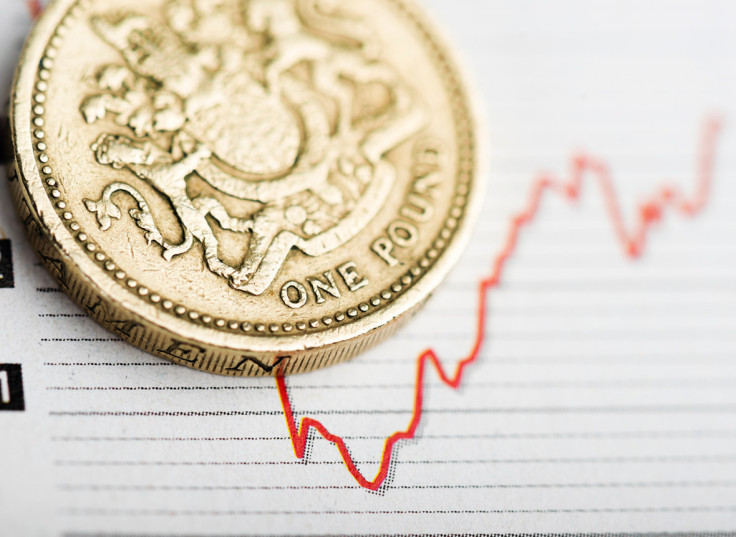Pound recovers as Britain's public sector spending falls to 10-year low
Sterling had fallen overnight against the US dollar following Federal Reserve decision to hike interest rates.

The pound has recouped some of its losses against the US dollar after official data showed Britain's public sector spending declined to its lowest level in a decade last month.
Sterling had fallen by as much as 0.7% against the dollar overnight, as the greenback rallied after the Federal Reserve unexpectedly maintained its hawkish outlook for interest rates on Wednesday (20 September).
However, by early afternoon on Thursday, the UK currency was only 0.14% lower against its US counterpart, trading at $1.3473, and 0.16% down against the euro, fetching €1.1325.
The pound could still suffer from more volatility this week, with Theresa May's much-anticipated speech on Brexit in Florence on Friday (22 September) earmarked as a pivotal moment for the currency's short-term trend.
"[May's] set piece in Florence will determine whether the pound finishes the week at $1.37 or back towards $1.32," said Kathleen Brooks, research director at City Index.
"The range-bound pound/dollar rate this week belies the importance of May's speech as it will set out the next policy steps for the Brexit process. The outcome of this speech is also seen as binary, it will either deliver a soft or hard Brexit, with a softer Brexit being the favoured outcome for pound bulls."
The pound was helped upward by figures showing an increase in VAT revenues, and a squeeze on local authority borrowing that drove public sector spending to its lowest level since 2007. According to the Office for National Statistics, the deficit in August fell 18% year-on-year to £5.7bn, compared with forecast for a £7.1bn reading.
VAT receipts rose 5.6% to £11.6bn in August, compared with the corresponding period last year, the highest for that month on record, and stood 3.1% higher in the April to August period at £56.5bn.
Meanwhile, borrowing for the financial year to date fell £200m to £28.3bn and analysts said the latest figure would provide a boost to Chancellor Philip Hammond.
"All of this suggests that the chancellor should have room for some easing of austerity in his Budget in November," said PwC chief economist John Hawksworth.
"This could involve extra money for priorities such as the NHS, social care, housing and infrastructure investment as well as some further relaxation of the public sector pay cap."
Elsewhere, the dollar relinquished some of its overnight gains but remained higher against most of its main rivals. The greenback was 0.14% and 0.23% against the yen and the Canadian dollar respectively and surged 1.16% against its Australian counterpart.
The rally came after on Wednesday the Federal Reserve unveiled plans to unwind its $4tn portfolio asset for the first time in nine years next month, and that interest rates will be lifted in December.
Subdued inflation, non-starter fiscal stimulus policies and the recent hurricanes are among the many reasons why investors had assumed that interest rate expectations would be scaled back at yesterday's meeting.
"Despite the Fed effectively forecasting four rate hikes before the end of next year, markets are pricing in only one or two and even then, unconvincingly," said Oanda's senior market analyst Craig Erlam.
"Clearly there is still a lot of convincing to do on the Fed's part, potentially providing in the process plenty of upside for US yields and the dollar."
© Copyright IBTimes 2025. All rights reserved.




















